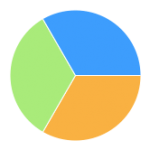Weapons Of Choice: My Top Five Twitter Tools

Hootsuite

I’ve recently signed up for Hootsuite Pro, which gives me access to unlimited accounts and RSS feeds (useful) and the Google Analytics integration is great. Right now, if you’re going high-powered with your social media presence, I recommend Hootsuite; it even pulls Facebook, LinkedIn and Foursquare as well as a couple of other platforms and the Android app isn’t half bad. If scheduled Tweets are your bag (which I don’t really recommend), Hootsuite’s scheduling is the most powerful I’ve encountered too.
What’s it missing? Well, I would love to see a desktop version. I’m also hoping that Google+ and Tumblr integration is on the horizon and I’d be very happy if there was a way to feed in Clicky’s real time analytics service too. As well as that, I’ve found that getting Klout scores to display can be a bit spotty, but other than these minor niggles, Hootsuite’s a great bit of kit.
Crowdbooster

Crowdbooster will tell you how many people your Tweets reach, track replies and ReTweets and from here, tell you what times get you the most impressions. If you’ve got something important to share, be it a new blog post, a promotion or other important link, you can plan your Tweeting around this time and maximise your reach. It will tell you which people to follow and which of your followers you should interact with. All in all, it makes building that all-important influence easier than ever. It’s free for people to manage up to three accounts and business accounts are affordably priced too.
I’ve got an invite going spare if anyone wants it.
Follower Wonk

That’s not all it does though; hell, Twitter’s own search function does that. What sets Follower Wonk apart is that it will A) find a lot more results and B) give you much more useful metrics than just how many people follow them and how many they follow. The ‘Friends’ column, for example, will tell you how many people from their follower list the owner follows back, which is a great way of gauging if you’re likely to be able to interact with them.
As well as this you can see the number of Tweets (why bother following an account that never Tweets, right?) and how old the account is. All in all, Follower Wonk’s a great resource, whether you go for the affordable premium account or stick with the free account. Hopefully there will be a redesign in the site’s future!
Klout

I tend to think of Klout as something of a “PageRank” for social media. Each user is assigned a rank out of 100 based on a number of metrics including True Reach (the number of people you influence), Amplification (how much you influence them) and Network Impact (how frequently the top influencers in your network share your content).
There are perks available for people that actively use Klout, although these seem to be quite US-centric and it’s nice to have a measure of how “well” you’re doing. The downside is that sometimes the topics it highlights can be a little bit spotty (for example, I think I’ve spoken about iPads once, and it’s one of my top topics) and to be honest, it’s like PageRank in that it’s probably not hugely relevant and isn’t what you’d describe as an actionable metric.
The Klout score is, however, a reportable metric, so if you’re doing social media for somebody, it’s good to give them a number they can understand and personally, as much as I like the in-depth graphs and data that you can get from Crowdbooster and Google Analytics, sometimes you just want it boiled down into a nice simple number.
Instapaper

Using Instapaper couldn’t be easier – you simply add the bookmarklet to your browser’s toolbar and click it when you land on an article you want to read later. As well as that, there are mobile apps that will let you do the same thing after you tap a link in your phone stream. These articles will be sent to the Instapaper application and you can read these articles whenever you like. Personally, I find it invaluable as it’s the ideal way to stay on top of my reading.
There You Have It
So, there you go. Those are my top five Twitter tools for Tweeting, measuring, analysing, expanding and keeping on top of what I’m doing with the platform. I hope you enjoyed the rundown. If you’ve got any more, let me know. I’d love to hear about them.




